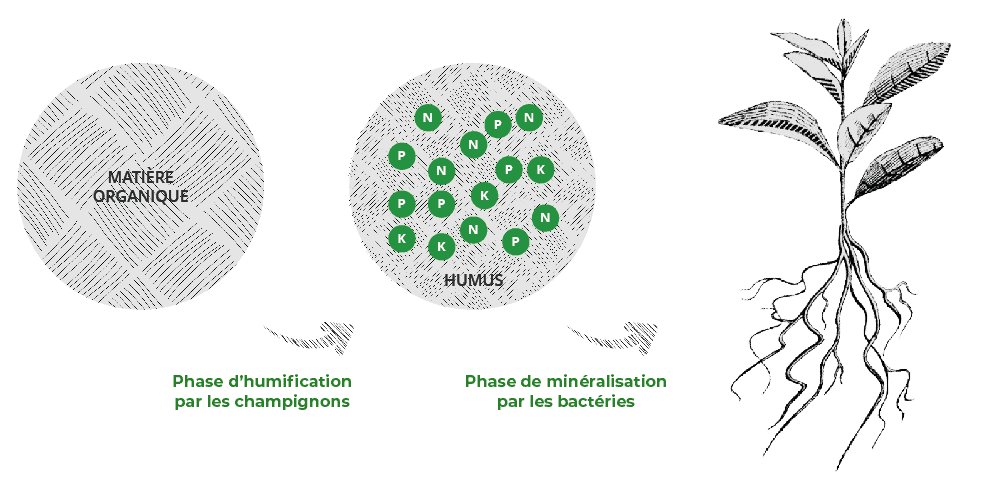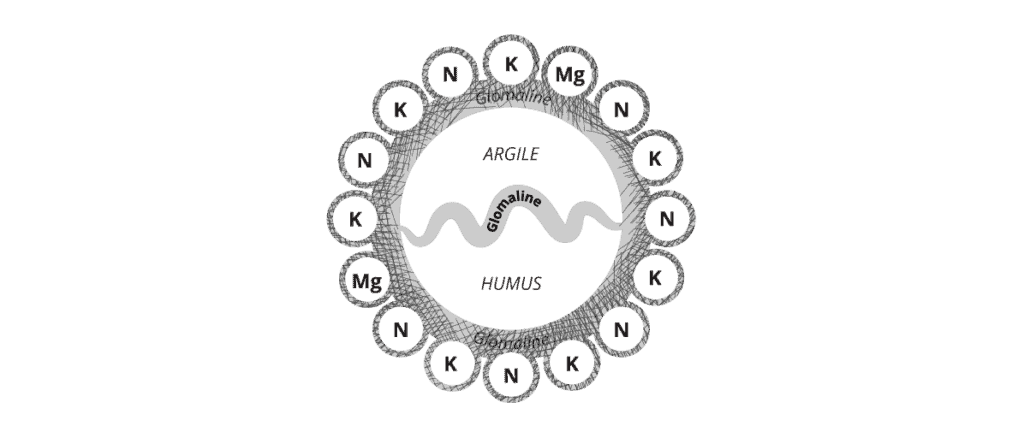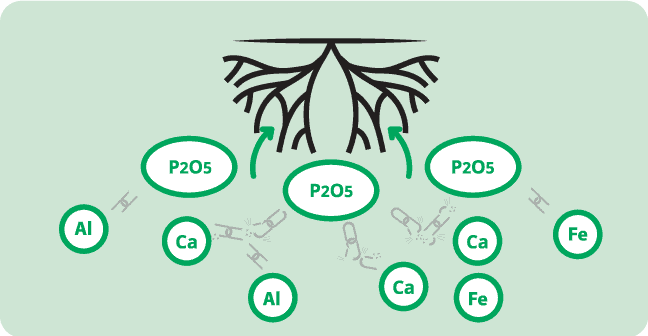
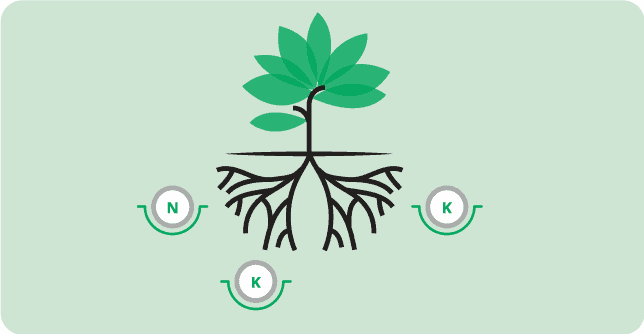
The mechanism for retaining fertiliser in the soil and preventing leaching into the lower layers.
Since humus is formed at the surface, let us now see how the clays are formed at depth. To form clays, the roots will dissolve the parent rock, stones and pebbles in the soil, secreting very strong organic acids called root exudates. These attacks will turn the rock into a mineral fraction of crystals thus forming clays. Clays are silicate salts of iron and aluminium. The rocks are mainly composed of silicon, iron and aluminium, which are the main atoms in the earth’s crust (26% silicon, 7% aluminium and 4% iron).
When a root has extracted all it needs from a rock, it will leave a lot of silicon, iron and aluminium in the periphery of the root. These compounds, being trace elements, are consumed in very small quantities. These elements are then concentrated and crystallised around the roots.
As in the harvesting of sea salt, the evaporation of sea water condenses the salt which ends up crystallising on the surface. The same will happen around the roots of plants, all these silicon, iron and aluminium elements that are increasingly concentrated will crystallise into iron and silicate alumina to form clays. These newly formed clays are of high quality. Clays are crystals with large sheets that have the ability to exchange cations. These clay minerals have the remarkable property of retaining potassium, magnesium, calcium and all other cations. Then life creates a system that will allow it to feed itself.
This phenomenon is natural. Look at the bushes growing on cliffs with no soil! It’s not a miracle, they’re just creating their own soil with their root system.
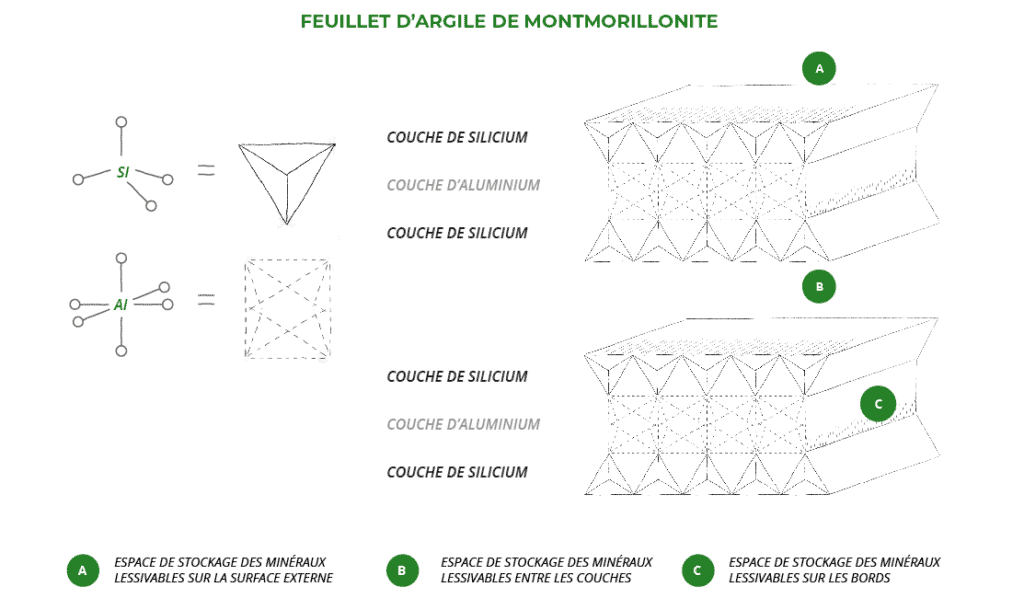
The roots can thus produce 3 to 5 tonnes of clay per hectare per year and at a depth of two metres.
Clays play an essential role in soils to reduce leaching phenomena, according to their 3 main characteristics: their size, their sheet structure and the presence of negative charges that cause their ability to fix and exchange ions with the soil solution. The quality of the clays, which consist of sheets, is defined by the internal surface area of all the sheets per gram. Prices vary from 80 m²/g to 800 m²/g! Knowing that clay stores minerals and water between its layers, the greater the surface area, the greater the storage capacity. The main clays are kaolinite (a white clay), siltstone (a non-swellable clay) and montmorillonite (a high quality green clay). The montmorillonite has the best storage capacity,
To create soil is to create clay and improve its capital. Therefore, it is necessary to optimize the root system of crops as much as possible, because the wealth is in depth.
Good plant cover will help maintain the soil’s heritage because when it rains, the best clays (montmorillonites) are released. These are clays with large internal surfaces that disappear easily because they can remain suspended in water for 48 hours. Kaolinites and illites remain more numerous but are the least qualitative clays. A living soil in good condition has 80 times more water absorption capacity. Its permeability is about 80 mm per hour while it is only 1 mm in compacted mud.
Direct seeding under cover offers a real alternative to break the structure of the clays and increase the porosity of its soils.
Based on this principle, Terrabiotec products for soil application such as :
- granular Terra Mineral, Terra Crop, Terra Myco etc,
- the Terra Mineral microgranules,
- the water-soluble Terra First and Terra Myco
- as well as the liquids Terra Flow
contain technology (retainers) (as one of the 6 technologies) which promotes excellent retention of nitrogen, potassium and other elements in the soil solution and especially near the root system, preventing leaching and providing more elements to the plant compared to common fertilizers.
tec to retain fertilizers in the soil and avoid leaching

